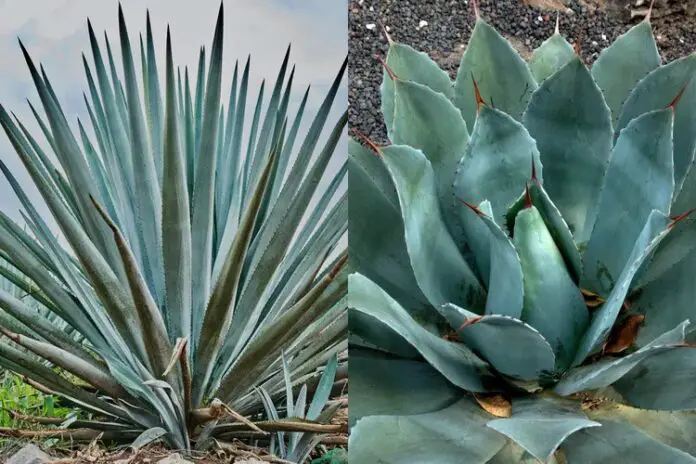The world of agave spirits has taken the global bar scene by storm, with tequila and mezcal being the hottest commodities in recent years. However, for many enthusiasts, confusion still surrounds these two spirits, often mistakenly referred to as interchangeable terms.
Bartenders and industry experts alike emphasize that tequila and mezcal are more than just smoky versions of each other – they have distinct histories, production processes, and flavor profiles.
According to Diego Livera, head bartender at The Cabinet Mezcal Bar in New York City, these spirits hold significant cultural importance for Mexican communities. “Tequila and mezcal can be important cultural touchstones because many producers express themselves through their craft, family bonds, and love of the land.”
A Brief History of Tequila and Mezcal
The origins of tequila and mezcal date back to Aztec ceremonies around 250 AD. Over time, these spirits have evolved, with tequila receiving designated appellation of origin (DO) status in 1994. Mezcal followed suit in 1995, after which its production became more regulated.
Tequila 101
Tequila is a distilled spirit made from blue Weber agave, grown primarily in Jalisco’s arid regions. This succulent plant contributes to the distinct flavor and aroma profiles of tequila.
There are five types of tequila:
1. Blanco: Unaged tequila with no oak or steel barrel aging.
2. Reposado: Aged for two months to one year in oak or steel barrels.
3. Añejo: Gold-colored, aged for one to three years in oak barrels.
4. Extra Añejo: Aged for at least three years.
5. Joven: A blend of mostly blanco tequila with some aged varieties.
Mezcal: The Smoky Counterpart
Mezcal is a broad category of spirits, made from roasted agave hearts (piñas). Unlike tequila, mezcal production allows for multiple maguey species and nine designated Mexican states.
Fast Facts:
1. Mezcal must contain 100% agave.
2. More than 40 approved agave species are used to distill mezcal.
3. Production is permitted in nine Mexican states: Oaxaca, Guerrero, Durango, San Luis Potosí, Zacatecas, Guanajuato, Michoacán, Tamaulipas, and Puebla.
Key Differences Between Tequila and Mezcal
The primary differences lie in their production processes:
1. Tequila: Made from blue Weber agave and produced in one of five designated regions of Mexico.
2. Mezcal: Produced using various maguey species and in nine Mexican states.
Tasting Notes and Pairing Options
Both spirits work well as standalone drinks or in cocktails. While tequila tends to display flavors of cooked agave, tropical fruit, and citrus, mezcal’s complex flavor profiles encompass fruity, herbal, vegetal, and mineral-like notes.
To enhance your drinking experience, consider the following pairing options:
1. Tequila: Pair with sangrita (a tangy accompaniment) or enjoy neat.
2. Mezcal: Serve unadorned or alongside salt or citrus.
3. Cocktail creation: Swap tequila for mezcal in classic cocktails like Margaritas and Palomas.
Expert Insights
Industry professionals share their expertise on using both spirits:
1. Jesse Vida (operating partner of Cat Bite Club in Singapore) recommends combining tequila and mezcal to create unique, nuanced drinks.
2. Ketsuda Nan Chaison suggests floating an ounce of mezcal atop a Margarita made with tequila for an unparalleled experience.
Tequila and mezcal are distinct spirits that showcase the rich cultural heritage of Mexico’s indigenous communities. While they share some similarities, their production processes, flavor profiles, and regional origins set them apart. By understanding these nuances, enthusiasts can appreciate the complexities of each spirit and enjoy them in a variety of settings – from classic cocktails to sipping neat.
Source: Food and Wine




